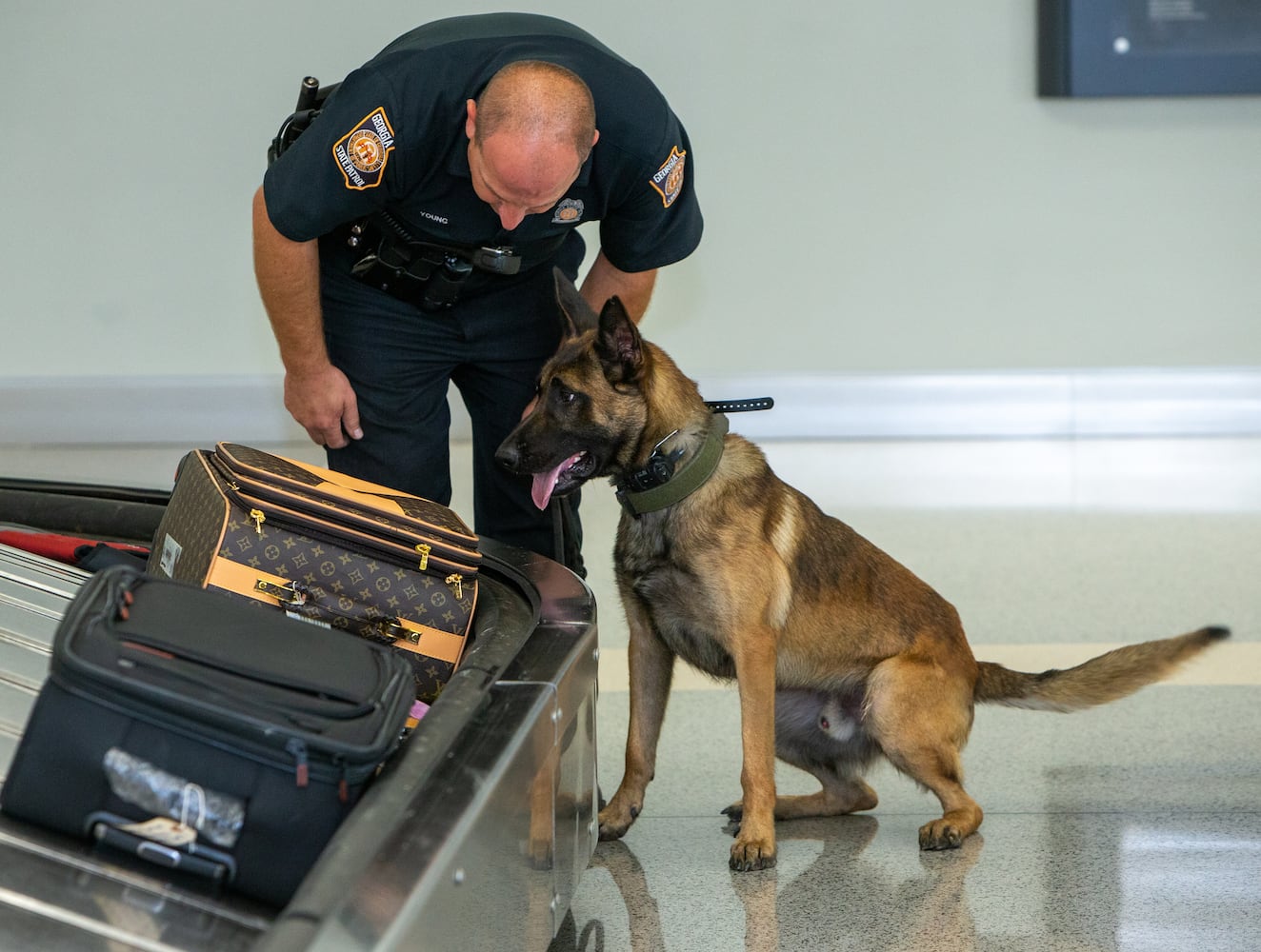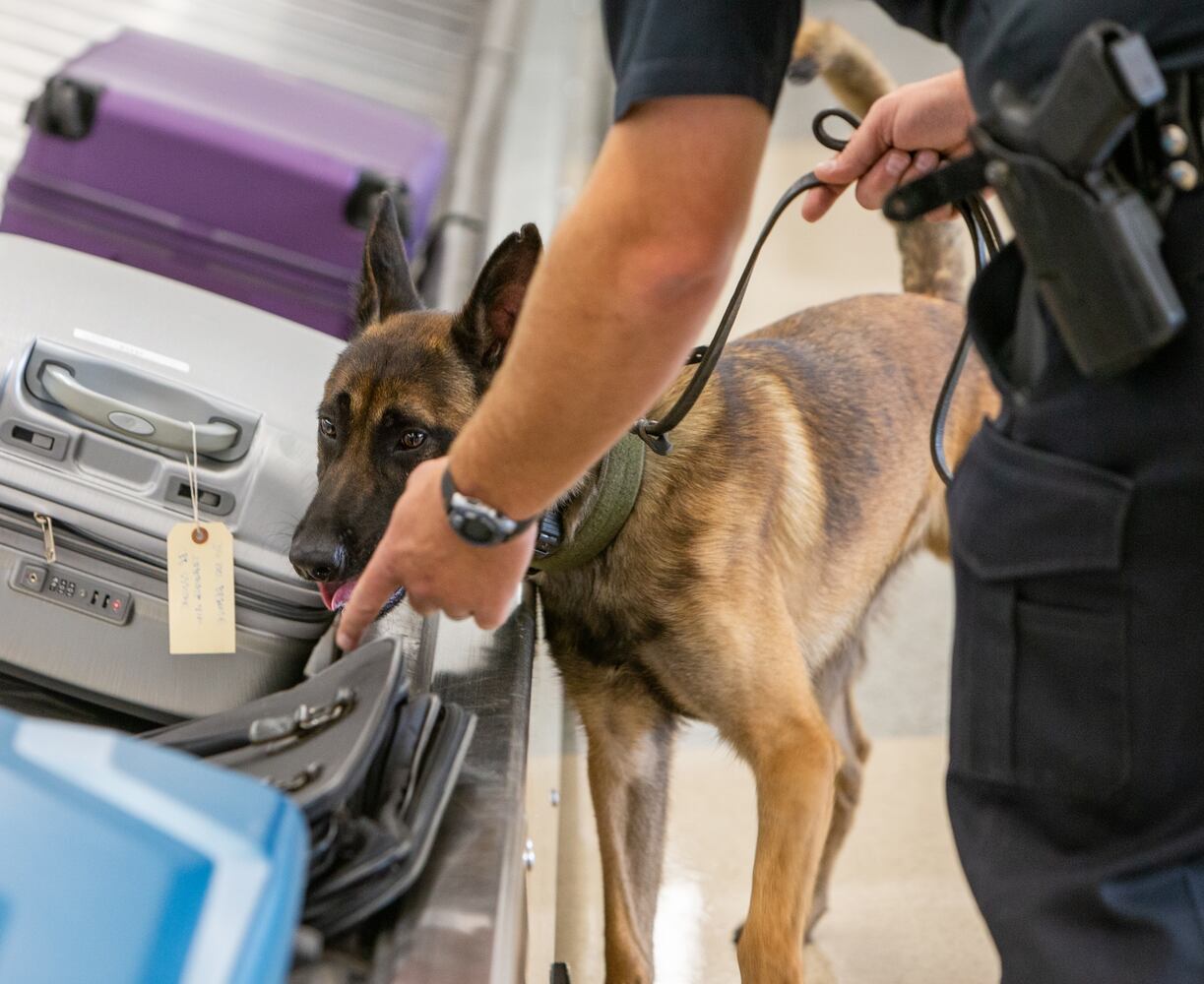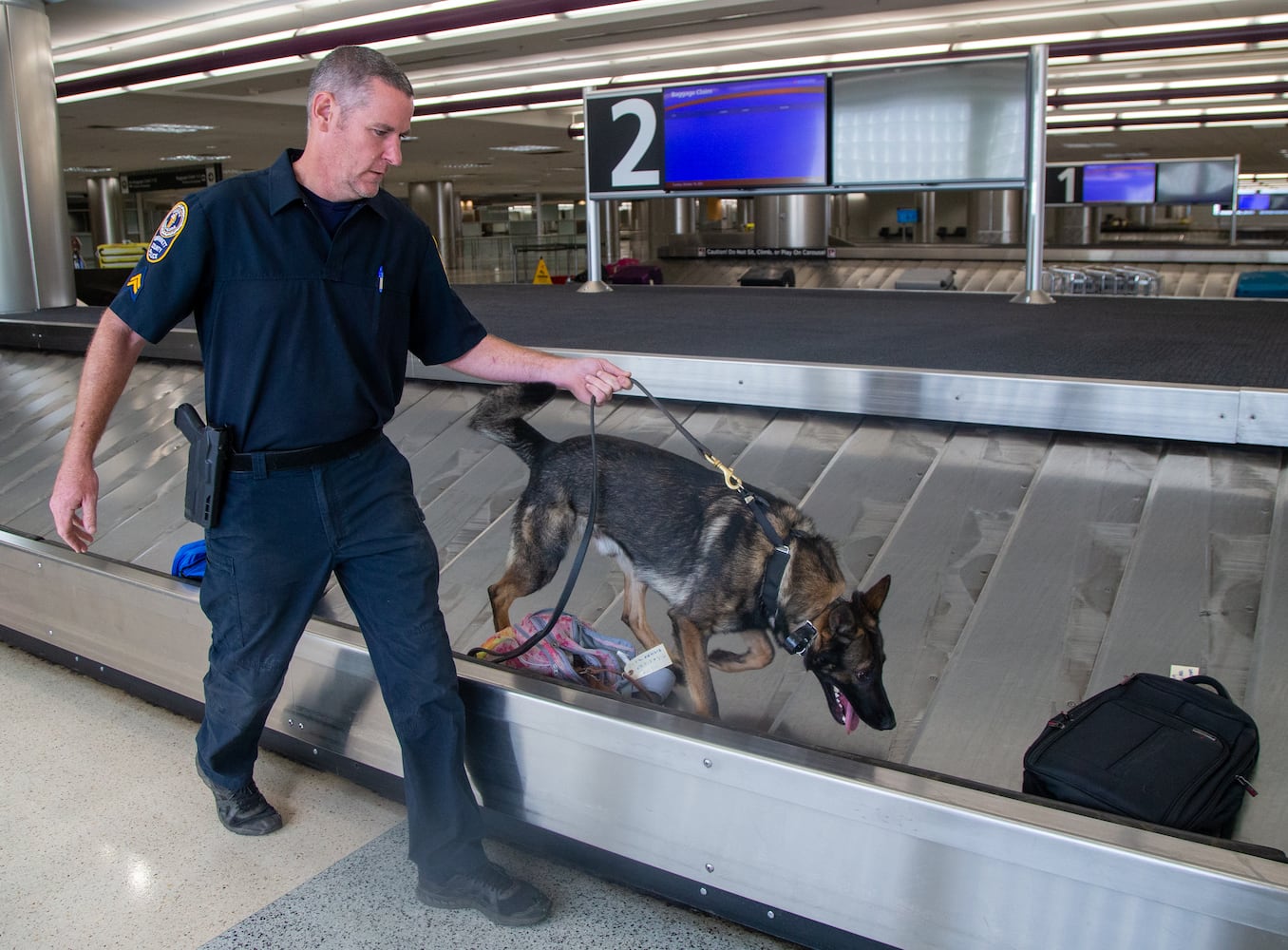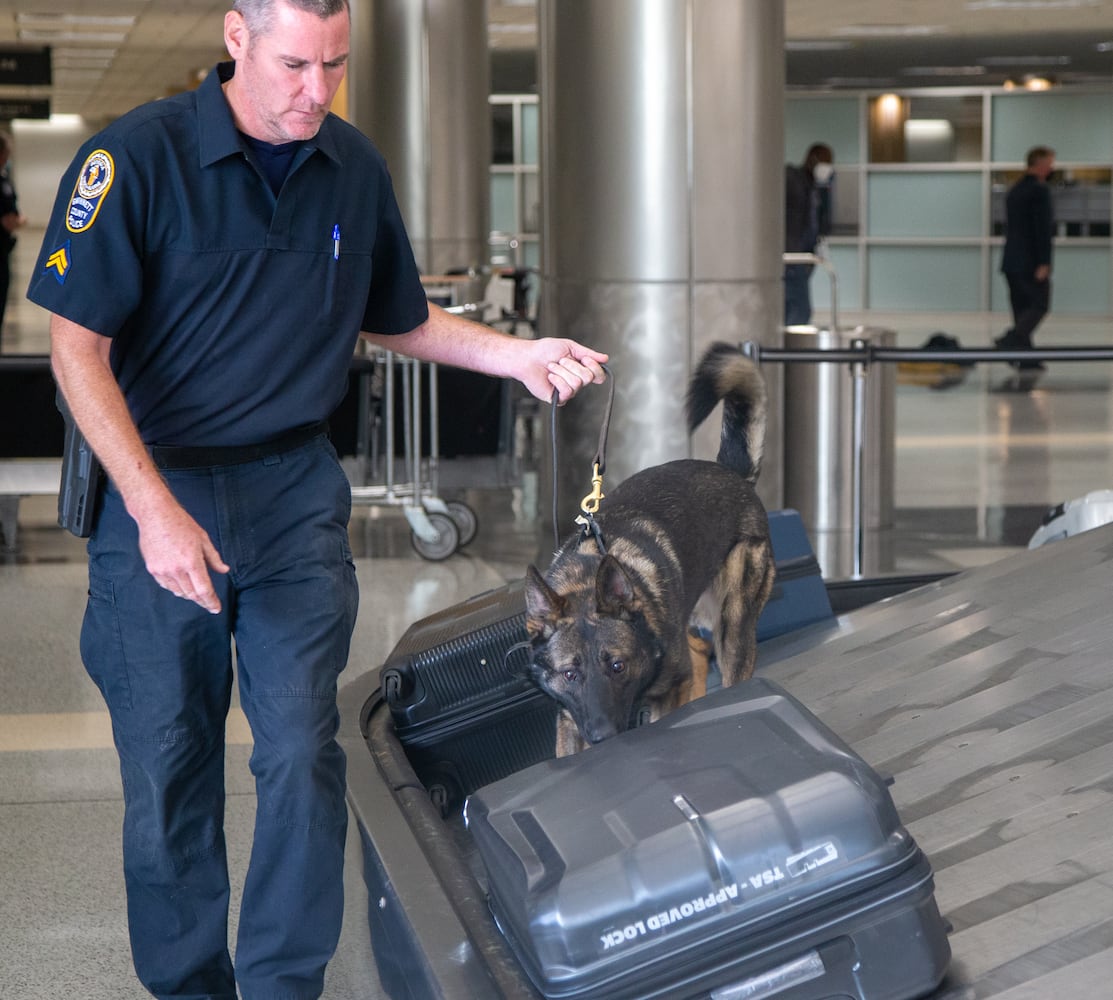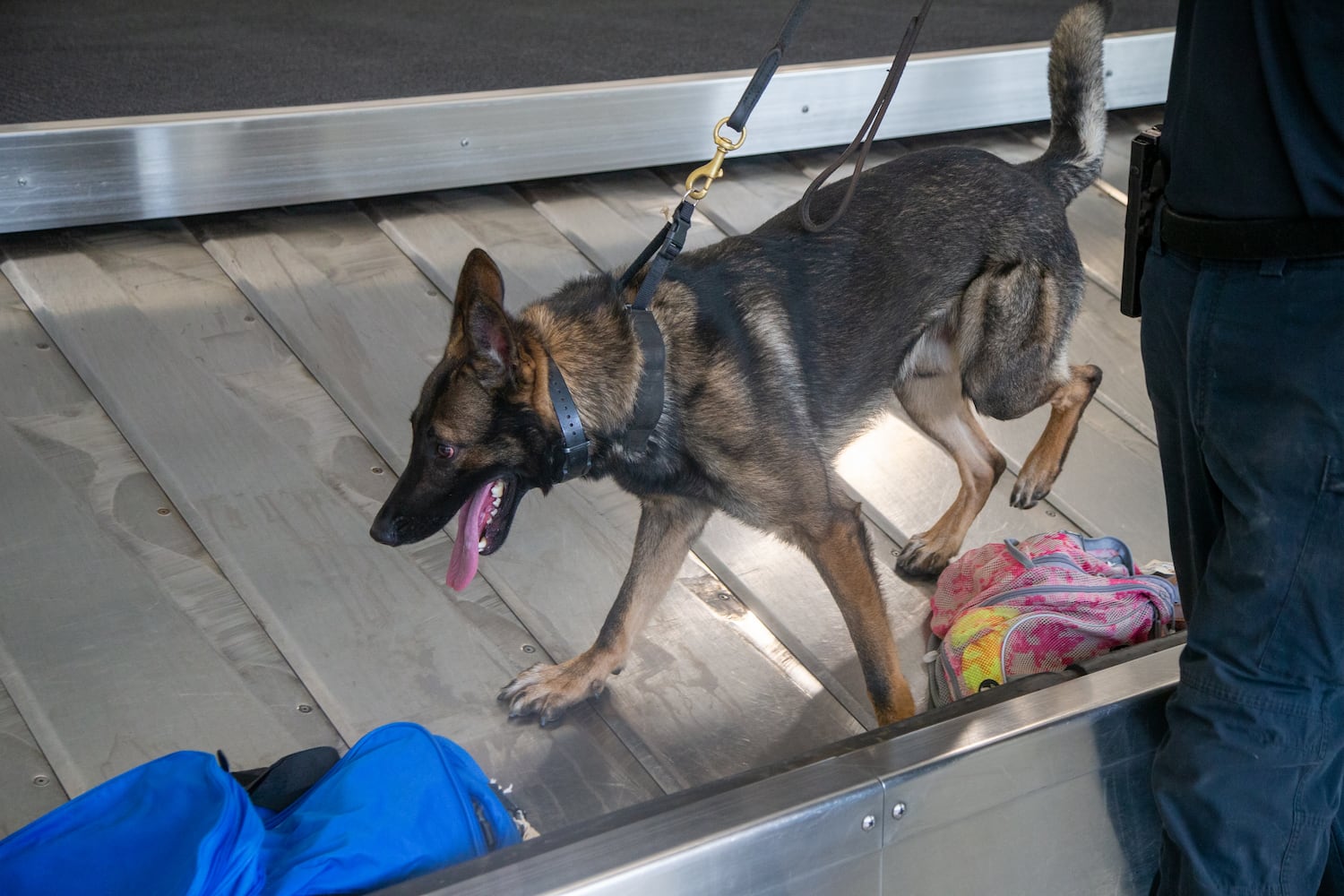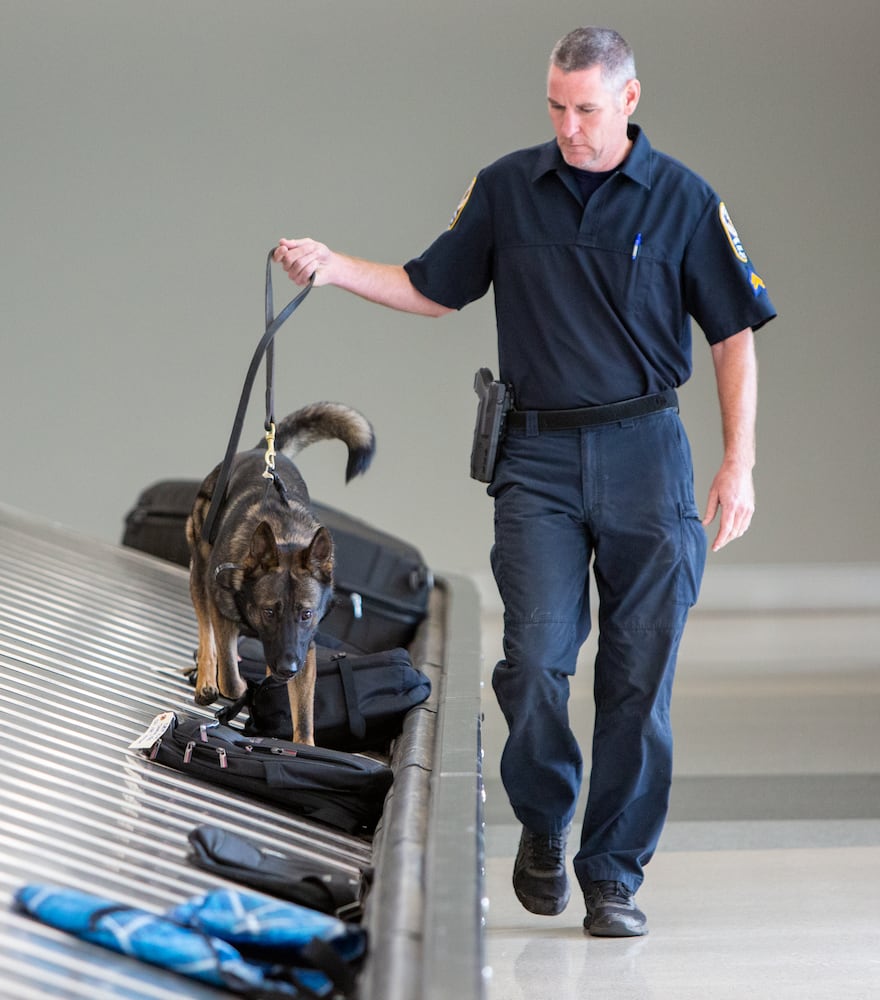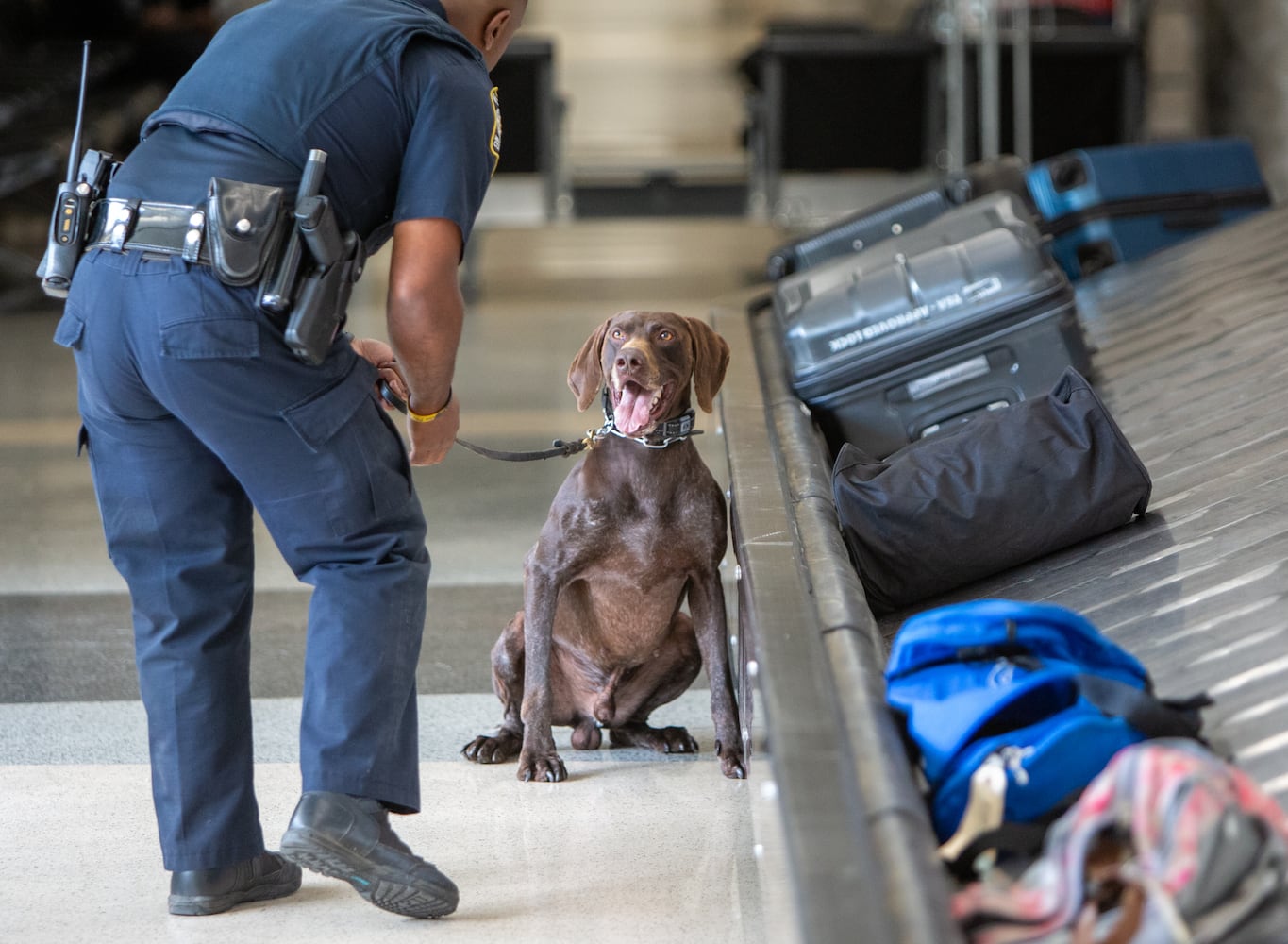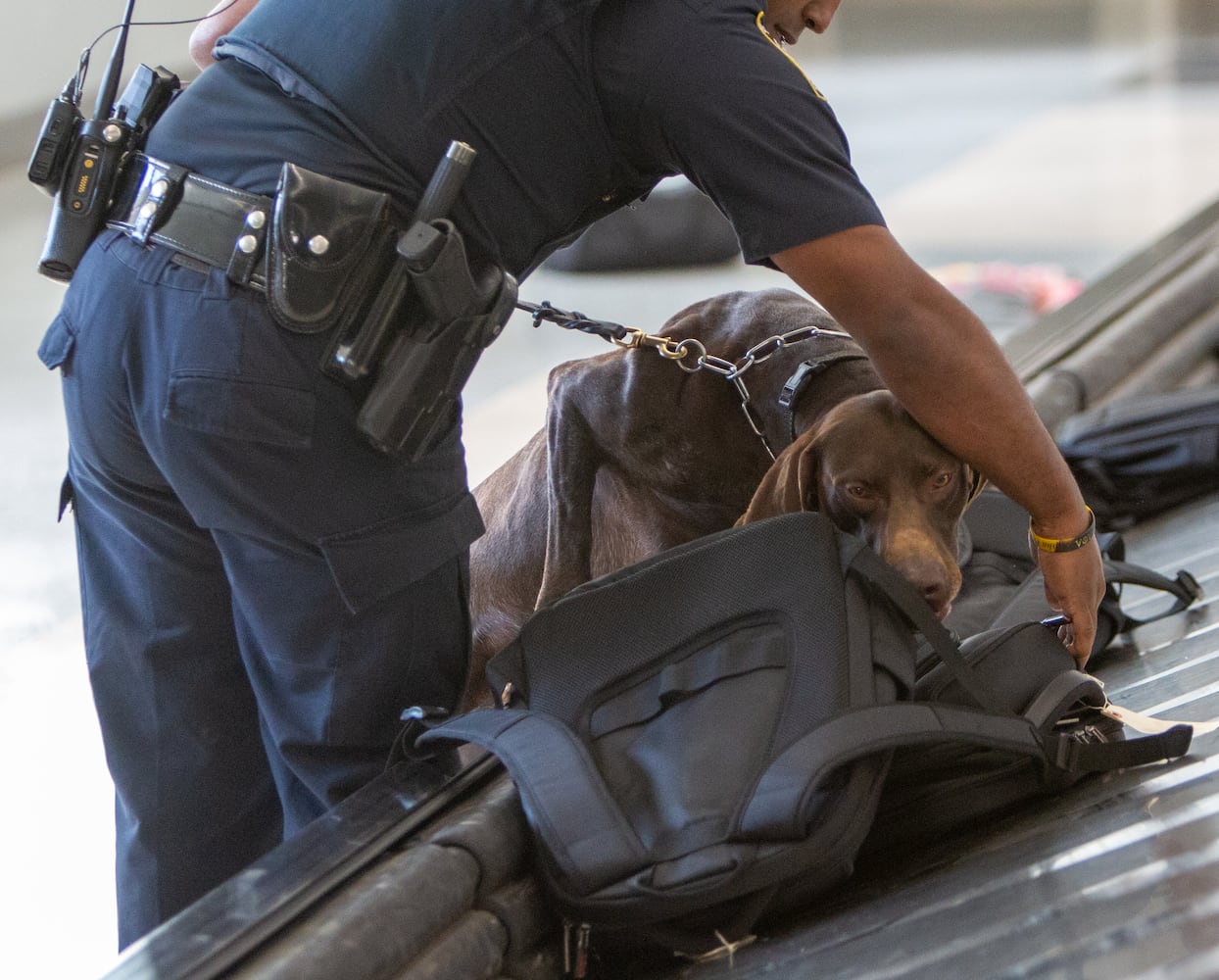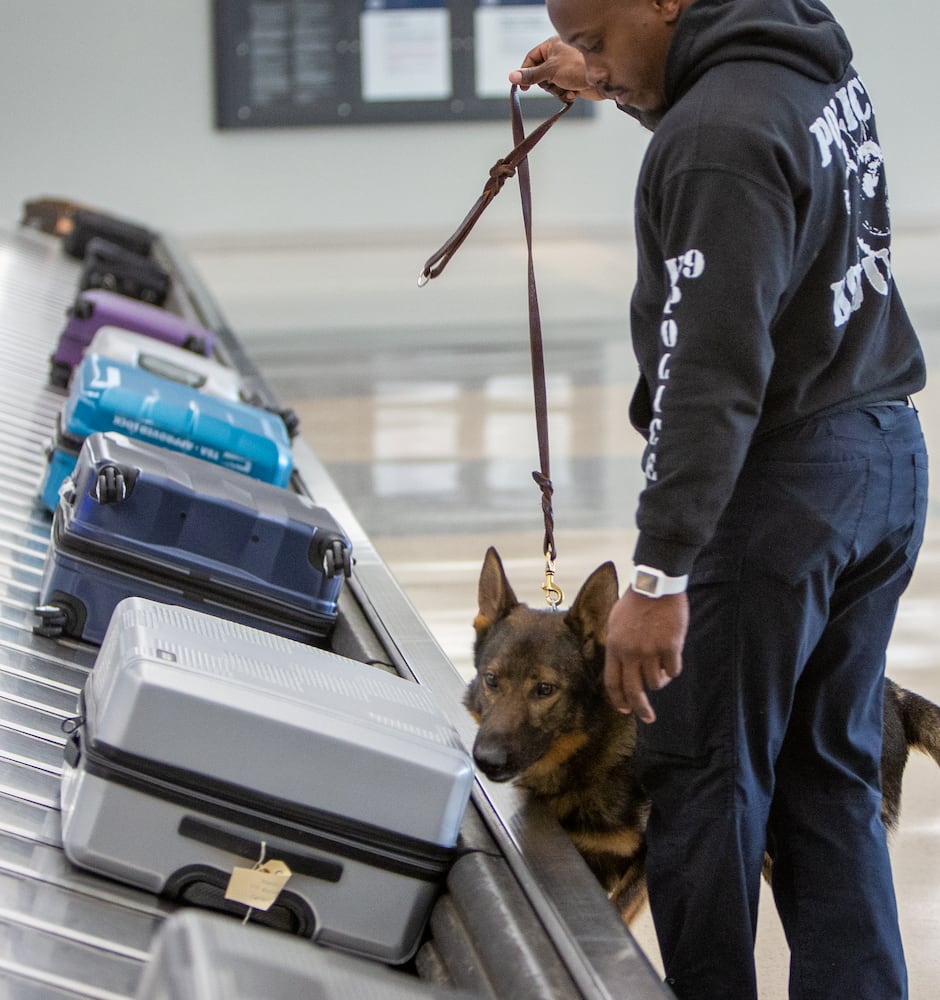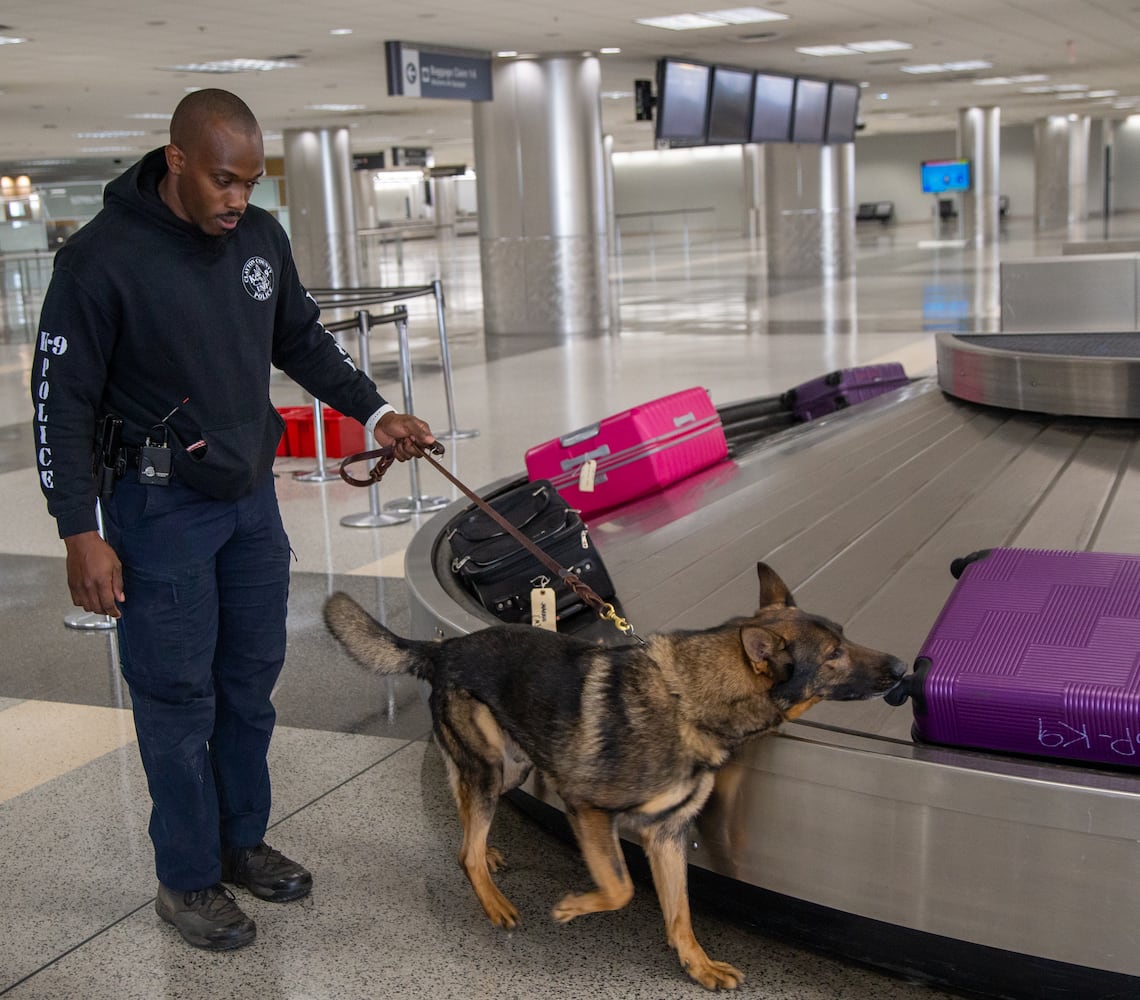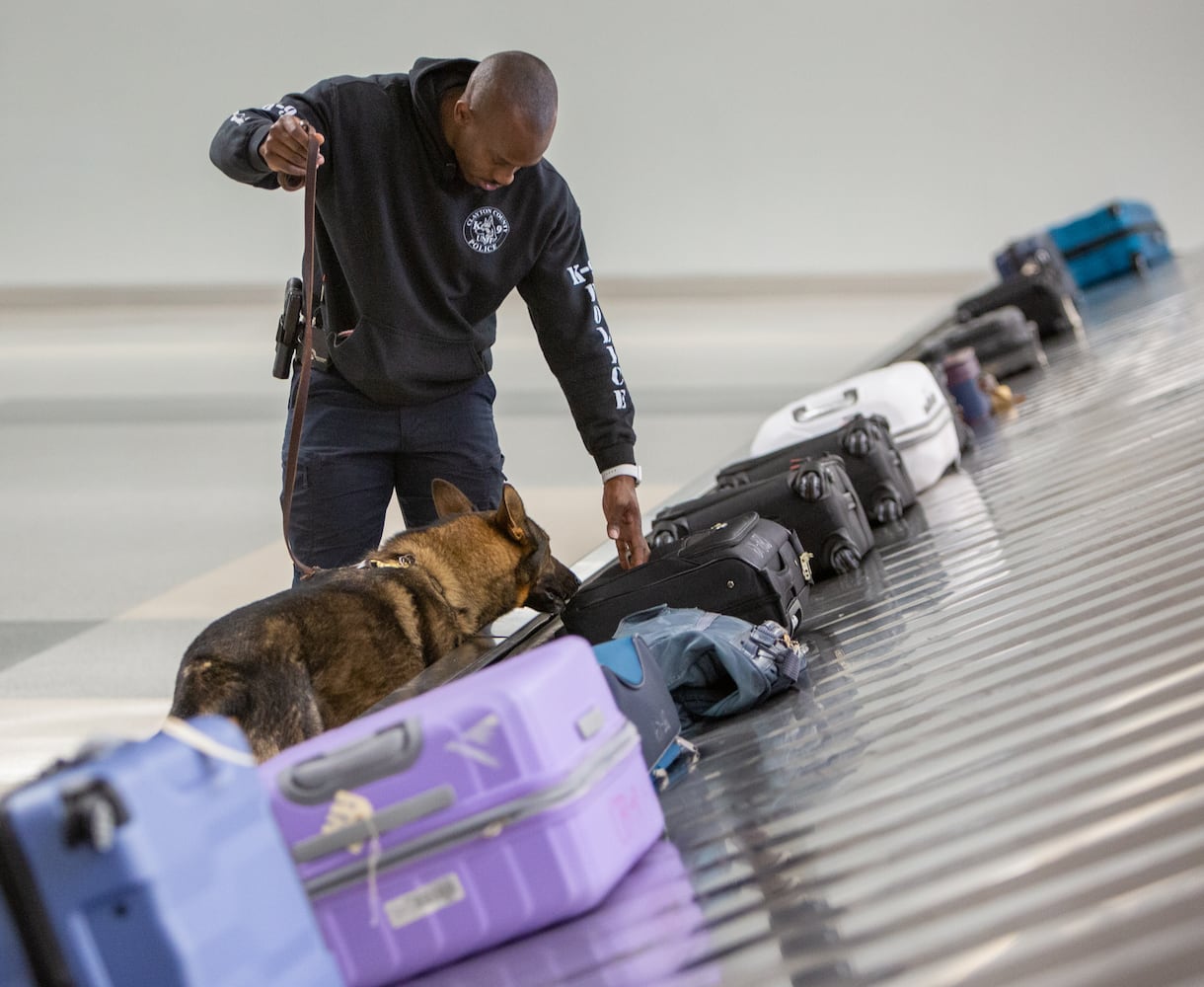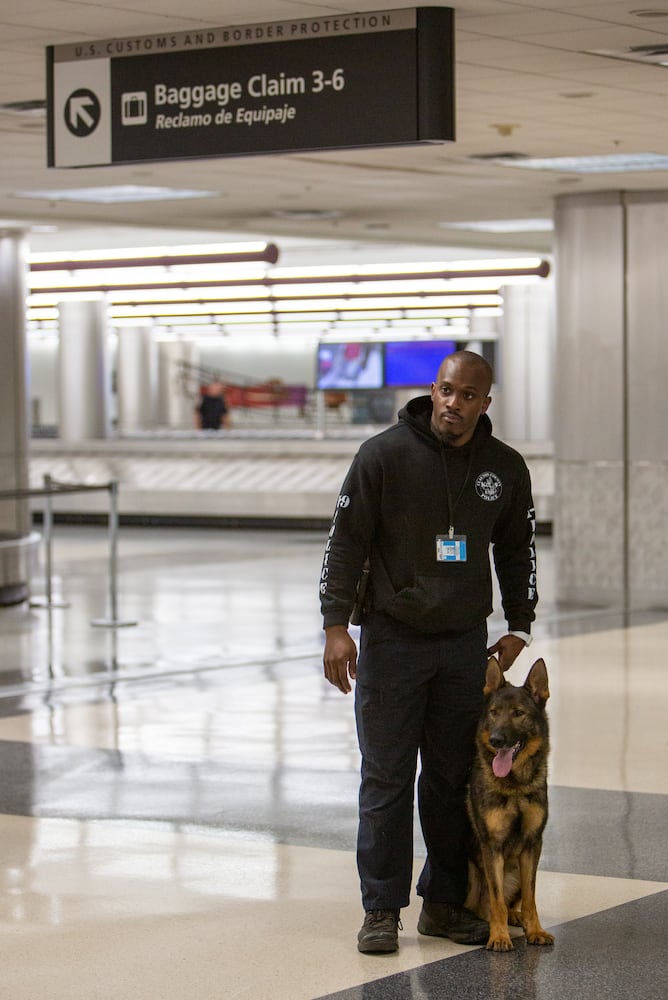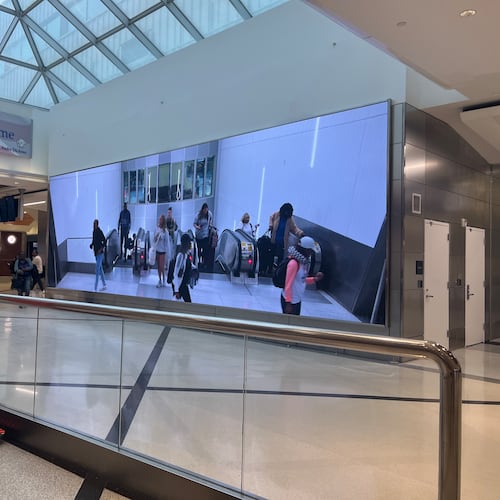Drug-sniffing dogs from police departments around Georgia received some special training at Hartsfield-Jackson International Airport this week.
The K9s and their handlers from Clayton County, Newnan and Bowdon police, Georgia State Patrol and the Georgia Department of Corrections practiced sniffing luggage, planes and cargo at a two-day event hosted by U.S. Customs and Border Protection.
Organizers said the collaboration is partly aimed at training dogs in a variety of environments — including airports — to make it easier for law enforcement to share dogs as needs arise.
But CBP declined to say how large its full staff of K9s is or will be in the future.
CBP spends five weeks training its dogs to sniff for hidden narcotics and people, followed by seven weeks of training with a handler before they start working.
Among the dogs best suited for the profession are the Belgian Malinois, which CPB supervisor Ken Hodgkins calls “the Ferrari” of dogs.
“Their drive is through the roof,” Hodgkins said. “They’re always wanting to work. They’re always trying to please you.” As a pet, the Belgian Malinois often likes to maintain an active lifestyle.
Other dogs well suited to become working K9s are German shepherds and Labrador retrievers, according to Hodgkins. Out of 25 dogs that underwent a recent round of training to join CBP, only two failed, he said.
They’re not the only type of working dogs at the airport. In addition to Atlanta police and CBP drug-sniffing dogs, the Transportation Security Administration has German shorthaired pointers, German shepherds and Labs trained to sniff for explosives and bomb-making material, while CBP beagles can deftly sniff out hidden fruit, meat and other prohibited agriculture items.
TSA canines and CBP beagles were not part of this week’s drug-sniffing training since they have a different set of skills.
With the TSA racing to get more of its employees vaccinated ahead of next month’s deadline for federal employees, U.S. Sen. Chuck Schumer has called for the TSA to use K9 teams as a contingency plan.
About the Author
The Latest
Featured
